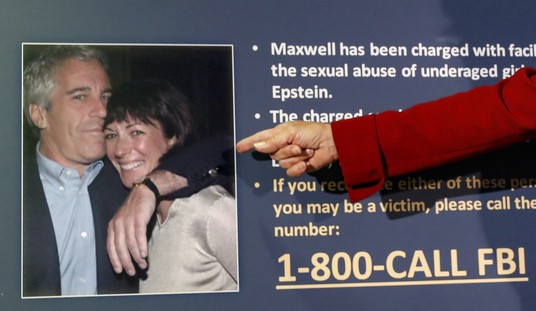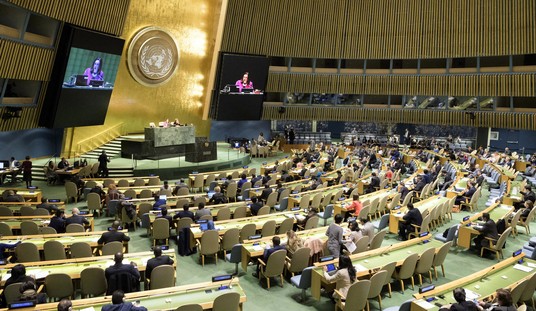A must-read from Upshot guru Nate Cohn and Kevin Quealy. Even if you don’t care about social media, you certainly care about the mainstream media, and social media is where much of the mainstream media’s daily narrative gets made. “[T]he most politically active, Democratic Twitter users … often engage with political journalists and can have a powerful effect in shaping the conventional wisdom,” write Cohn and Quealy of progressive influence over reporters. If it’s true that there’s a major disconnect between what Democrats as a whole want and what lefties are telling the media they want, that’s important to know.
It’s also something to bear in mind the next time you hear a reporter cite the number of Twitter followers Alexandria Ocasio-Cortez has as alleged evidence that socialism is ascendant. And of course also something to bear in mind the next time you catch a progressive on social media confidently declaring that he knows what the rank-and-file of his party truly want on policy.
Since we’re on the cusp of a contentious presidential primary which may or may not end up as a death match between progressivism and more traditional liberalism, it’s worth considering whether the voting power of the former might be grossly overstated:
The outspoken group of Democratic-leaning voters on social media is outnumbered, roughly 2 to 1, by the more moderate, more diverse and less educated group of Democrats who typically don’t post political content online, according to data from the Hidden Tribes Project. This latter group has the numbers to decide the Democratic presidential nomination in favor of a relatively moderate establishment favorite, as it has often done in the past…
The rest of the party is easy to miss. Not only is it less active on social media, but it is also under-represented in the well-educated, urban enclaves where journalists roam. It is under-represented in the Northern blue states and districts where most Democratic politicians win elections.
Many in this group are party stalwarts: people who are Democrats because of identity and self-interest — a union worker, an African-American — more than their policy views. Their votes are concentrated in the South, where Democratic politicians rarely win.
Democrats on social media are verrrrrrry white relative to the rest of the party, better educated, more likely to closely follow daily news, and less likely to say political correctness is a problem — all of which sounds suspiciously similar to the average journalist. This might matter in the primaries too, say Cohn and Quealy, not just in terms of there being a bigger market for a Biden-style centrist than the chattering class would have us believe but in the ability of more radical candidates like Sanders to cut into Biden’s base. Moderate, less engaged voters tend to be more skeptical of politics, which makes utopian plans like the Green New Deal a harder sell to them.
The Upshot piece doesn’t discuss righties but it must be true that the average right-wing voice on social media is further right than the Republican Party writ large. People on both sides tend to seek out platforms like Twitter and Facebook because they’re passionate about politics and want to amplify their opinion, often because they feel that opinion is given short shrift in mainstream political debate. Go figure that you find more conservative/populist/reactionary ideologues posting on righty forums than you do suburbanites who vote GOP mainly because they don’t want their taxes getting hiked. But it may be true that there’s less of a mismatch between right-wing mainstream media and social media than there is on the left. For one thing, the Democratic coalition is more demographically diverse: Part of the disconnect on that side is that, as noted, fewer black Democrats are online than whites are, and blacks tend to be more moderate on certain issues. The GOP is more demographically uniform.
And of course there’s less of a “mainstream media” on the right to be influenced by right-wing social media than there is on the left. There’s basically Fox and talk radio, and talk radio has always been populist. There are/were mainstream right-wing ideological outlets like National Review and the Weekly Standard but the relationship between outlets like those and online right-wing activists fell apart during the past few years over their disagreement about the virtues of Trump-style populism. Fox has certainly been heavily influenced by online activists, but whether that would still be true today if Trump had lost the primary or the general election in 2016 is unclear. Access to power in the White House made Fox’s hyper-populist turn in primetime an easy call for them; remove that access from the equation and who knows?
Anyway, the Cohn/Quealy piece is obviously encouraging for Joe Biden. And not the only encouraging sign for him out there today:
Allegations by multiple women that former Vice President Joe Biden touched them in ways that made them feel uncomfortable struck a nerve with the political chattering class, but it has not yet changed the minds of a key constituency in the Democratic coalition: women.
According to Morning Consult’s latest 2020 tracking poll, 34 percent of Democratic women said Biden is their first choice for the party’s nomination to take on President Donald Trump next year, down 1 point from the previous week and within the surveys’ 1-percentage-point margins of error for that subgroup.
The crush of online thinkpieces about Biden’s problematic-ness has had little effect on his polling (his favorable rating is down a bit), even with women, among the general Democratic electorate. Score another one for the Upshot piece’s thesis.








Join the conversation as a VIP Member